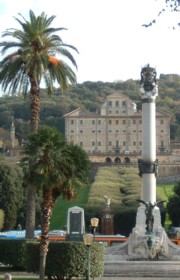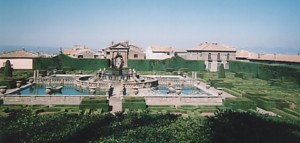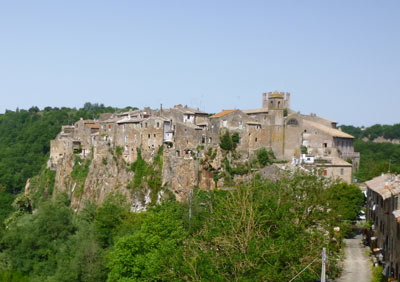Beautiful, crumbling medieval hilltop towns, faded palaces, large and tranquil lakes in old volcanic craters, thermal springs and fine wines…
About Lazio
Lazio is in central Italy, on the western coast. The region was formerly known to English travellers by its Roman name, Latium, although this version of the name is now rarely used. A major port of call on the Grand Tour, when eighteenth-century travellers explored its scenic villages, Lazio is now largely overlooked in favour of its capital, Rome.
With so much investment, jobs and tourism concentrated in Rome, the surrounding region is often quiet, depopulated and rather run-down. For tourists, the good side of this is the tracts of unspoiled countryside, the dilapidated but surviving historic town centres, and the welcome you may receive. Tourists are rare creatures in many of Lazio’s smaller towns, and once locals realise you are interested in their hometown they are generally delighted.
Lazio is divided into five provinces. In the north and west, bordering Tuscany and Umbria, are the Provinces of Viterbo and Rieti. In the centre of Lazio, the region’s administrative centre is the Province of Rome, then to the south lie the Provinces of Latina and Frosinone.

Lazio destinations
- About the Lazio region
- Anzio
- Bracciano
- Calcata
- Castel Gandolfo
- Castelli Romani
- Cerveteri
- Formia
- Frascati
- Gaeta
- Palestrina
- Pontine islands
- Ponza
- Rome
- Sperlonga
- Terracina
- Tivoli
- Ventotene
- Viterbo
Ruins and gardens
Lazio airports and travel
Rome Fiumicino and Rome Ciampino are the two airports serving the region. If you’re sticking to a few major sights, the public transport is fairly efficient, but to get around the whole area it’s a good idea to hire a car. There are local bus and rail services, but if you want to fit in a lot of sights, public transport isn’t a really efficient use of time.
Lazio tourist destinations
Rome is of course the principal tourist destination in Lazio. Most of the region’s other sights can be managed as a daytrip from the city, but if you’re interested in a slightly different holiday, consider staying for longer in one of Lazio’s other provinces. As well as Rome itself, the Province of Rome boasts popular tourist destinations like Frascati and Tivoli.

Viterbo, to the north, is a historic town with a beautiful, well-preserved medieval centre. Its province offers a wealth of tourist attractions: the lovely Lakes Vico and Bolsena, splendid gardens at the Villa Lante in Bagnaia, a grand palace at Caprarola, Etruscan remains at Tarquinia and Vulci, thermal springs and famous wine (Montefiascone’s Est! Est!! Est!!!).
The Province of Latina runs for 100km along the coast, between Rome and Campania, and includes stretches of sandy beach and charming resorts like Sperlonga, and the Pontine Islands. Frosinone is inland and its most well-known tourist destination is Fiuggi, a spa resort with thermal springs. Budget coach tours sometimes use Fiuggi as a base for seeing Rome, although it is some distance from the Eternal City.
Archaeological sites
Naturally, Lazio – heart of the Roman Empire – is chock-full of archaeological sites. Before the Romans, the northern part of Lazio was dominated by the Etruscan civilisation. The Etruscans didn’t leave many traces of their lives, but their deaths are recorded in famous burial grounds. The necropolis at Cerveteri is composed of many ‘streets’ of stone tombs, while the burials at Tarquinia are notable for their painted decorations. More, smaller Etruscan sites can be visited around Viterbo, while the best grave goods and artefacts are on display in the Villa Giulia in Rome. After the major Roman sites and museums in Rome, one of the best archaeological sites in the area is Ostia Antica, Rome’s ruined port. Major temple complexes can be visited in Palestrina and Terracina, where a massive temple overlooks the sea. Wealthy Romans have always liked villas in the countryside, and there are ruins of villas belonging to Roman emperors at Anzio (Nero), Castel Gandolfo (Domitian; the ruins are now in the Pope’s private garden), Sperlonga (where Tiberius dined in a decorated grotto) as well as Tivoli, where the most luxurious villa of all was built by Hadrian.
Useful external links
